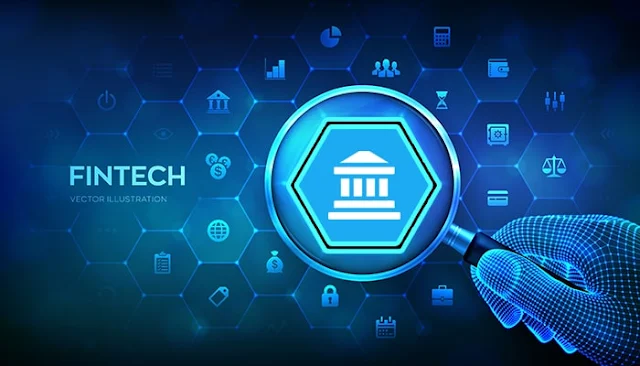 |
| Fintechzoom IO: Rise of Fintech and Financial Literacy Stock Market Courses |
Financial literacy helps you secure your future with the right investments. Everyone must learn how to manage finances and how to make the right choices in stocks. This is where you need FintechZoom.io to enhance your financial skills.
CNET survey reports suggest that 47% of Americans believe that money negatively impacts their lives. Lack of emergency savings is another big issue.
FintechZoom provides tools, applications, and guidance to improve your financial condition. It guides you to save, invest, and get better return on investment.
To make things easier for you, FintechZoom.io has launched financial literacy and stock market courses. These are the courses that help an average American grow his savings and investment.
No matter if you are a newbie investor or an expert financial advisor, it is always good to learn more to be better at finance.
Today, I am explaining the need for financial literacy, the rise of fintech solutions, and FintechZoom .IO courses.
FintechZoom.IO:
FintechZoom .io is a fintech platform made for people seeking help to manage their finances. It is a DIY platform that guides the steps to improve savings, funding, and investment.
FintechZoom IO was launched in 2024. Within two years, that website peaked in popularity with 2.3 million users. It is a popular financial literacy platform in America. An average American user can learn from fintechzoom.io courses to enhance stock and crypto investments.
The stock market courses have increased the popularity of fintech among seasoned investors.
Rise of FintechZoom:
Fintech is the combination of finance and tech. FintechZoom employs modern technologies to ensure financial stability and literacy.
In the modern era, the financial sector is filled with advanced technology to improve knowledge, skills, strategies, and returns. Companies depend upon the latest technologies to process financial services.
Financial organizations are using technologies like mobile payments, wallets, peer-to-peer lending, digital banking, crowdfunding, robo-advisors, and insurtech.
FintechZoom is using financial technologies to make it easier for users to enhance financial decisions.
FintechZoom IO launched multiple courses and a dedicated blog section to help you learn financial planning and management.
FintechZoom.io Courses:
FintechZoom.IO launched 3 courses to improve financial knowledge and skills.
- The Complete Financial Literacy Course
- Stock Market Trading Course
- Stock Market Investing Course
FintechZoom The Complete Financial Literacy Course:
FintechZoom The Complete Financial Literacy Course offers everything that you need to secure your financial future. It teaches wealth management, investing, and budgeting.
FintechZoom financial experts have designed a financial literacy course to help newbie and intermediate investors.
The goal of this course is to make you able to identify investment opportunities and make the right decision.
The course includes:
- On-demand videos
- Printable Worksheets
- Quizzes
- Certification
FintechZoom .io stock market courses are divided into two sections:
Stock Market Trading Course:
FintechZoom’s stock market trading mastery course Improve your financial knowledge with practical skills. It offers hands-on training sessions with immersive experience. The professional coaching program with advanced stock market tools helps users to enhance decision-making.
The stock market trading course is best for new and seasonal traders. It also helps working professionals to get better at stock trading.
The course includes:
- 4-6 hours of video lessons
- Practical resources
- Quizzes
- Certification
Stock Market Investing Course:
The FintechZoom Stock Market Investment Mastery Course refines your investment approach. It gives you deep stock market insights, with strategies and resources. Stock market experts participate in course sessions to increase your knowledge and experience.
The Stock Market Investment Mastery Course is best for beginner and intermediate investors. Working professionals can also learn ways to diversify their portfolios to achieve long-term goals.
- On-demand video lessons
- Printable PDF Worksheets
- Daily Quizzes
- Certification
Popular Sections of FintechZoom .io:
Stocks:
Stocks is the most popular section at FintechZoom .io. In the Stocks section, users learn about stock market updates, top picks, and news. The stock section helps investors to understand the market's emotion. It is a place to grow your stock market knowledge.
Access the Fintechzoom stock section from here: https://fintechzoom.io/stocks/
About Us:
About Us is the most popular section of any website. It is the place to learn the value, history, and strategies of the platform. Fintechzoom.io shared crucial information about its business operations and investment strategies on the About Us page.
Access the Fintechzoom About Us page from here: https://fintechzoom.io/about-us/
Loans:
Loans make people live under pressure. But an investor uses loans to multiply his fortune. Fintechzoom .io offers strategies to get loans for business and investment. It also shares the necessary documents, process, and duration for each type of loan.
Access the Fintechzoom Loans page from here: https://fintechzoom.io/loans/
Courses:
FintechZoom launched 3 courses to educate newbie and regular investors. The Complete Financial Literacy Course, Stock Market Trading Course, and Stock Market Investing Course help you understand the stock market, trading, and investment strategies.
Access the Fintechzoom Courses page from here: https://fintechzoom.io/courses/
Blog:
FintechZoom's blog section works similarly to eAskme's Finance section. You get every detail about the latest news, updates, regulations, and economic policies. The blog section is accessible for every user.
Access the Fintechzoom Blog page from here: https://fintechzoom.io/blog/
Benefits of FintechZoom.IO:
FintechZoom.io offers multiple features and benefits to enhance your financial skills.
Here are the notable features and benefits:
User Friendly:
FintechZoom.io is a user-friendly platform. It is accessible on multiple devices with an internet connection. You can access it anywhere in the world. The platform loads faster. It is easy to navigate between different features and financial tools.
Alerts:
FintechZoom also sends personalized alerts based on your selection of stocks or investment opportunities. But this feature is available to registered users only. These notifications help you make the right investment at the right time.
Real-Time Updates:
FintechZoom offers real-time stock market updates. It analyzes reports about market trends and emotions. The platform analyzes crucial information impacting stock prices of NASDAQ. The platform also integrates financial tools to track your investment and expense ratio report.
Security:
FintechZoom.io is a secure platform. It uses HTTP to encrypt internet connections. The platform also does not ask for your personal information. You can access the blog section with a login.
FintechZoom Community:
FintechZoom also has an active community of investors and newbies. It is an ideal section of the website to enhance your knowledge and skills. The community is active with like-minded people.
Support:
The FintechZoom platform provides 24/7 support to its registered users. You can ask for portfolio management and stock selection.
Drawbacks of FintechZoom.io:
FintechZoom.io is making a significant impact in financial markets. Yet, it faces some challenges.
Here are the most common challenges of this fintech platform:
Trust:
FintechZoom has changed its destination URL multiple times. This makes it harder for the user to trust the platform.
Competition:
FintechZoom is getting tough competition from platforms like Crypto30x and Money6x. Its competitors are offering better services at zero cost.
Downtime:
In the past 30 days, the FintechZoom platform has faced multiple downtimes. The downtime is common during stock market business timings.
Future of FintechZoom.IO:
FintechZoom.io is an excellent platform to boost financial knowledge. The rise of the latest technologies is also making platforms like FintechZoom popular.
It helps users understand the role of digital currencies and precious metal stocks in an investment portfolio.
The platform integrates multiple tools to enhance its reporting features. It is using Eco-friendly strategies to enhance user experience.
Fintechzoom .io is also collaborating with other financial institutions to stay ahead of its competition.
Conclusion:
FintechZoom.io is empowering the fintech sector with its dedicated knowledge section. It is a user-friendly, content-driven platform.
Financial literacy is its primary goal. FintechZoom’s courses help users to understand the different aspects of stocks, finance, and investments.
With its expert-led content, FintechZoom .io is helping you to grow your wealth with better return on investment.














